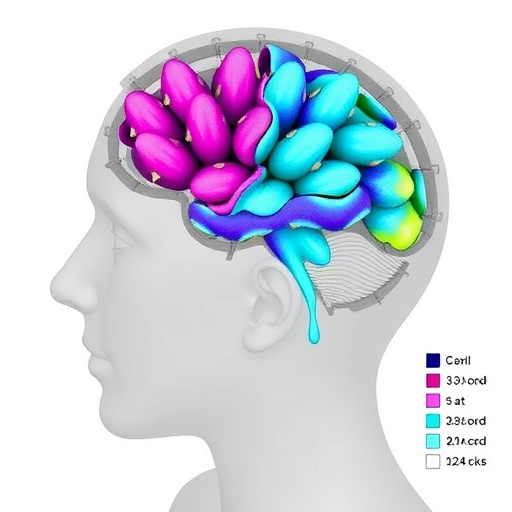In a groundbreaking exploration that challenges conventional understanding of Parkinson’s disease (PD), new research reveals that immune responses targeting mitochondrial protein PINK1 and neuronal protein α-synuclein are significantly heightened during the prodromal phase of the disorder. The study, conducted by Johansson, Freuchet, Williams, and colleagues and published in npj Parkinson’s Disease, offers unprecedented insight into the early immunological changes preceding the motor symptoms that have long defined PD’s clinical diagnosis. This revelation opens a novel window for early diagnosis, disease monitoring, and potentially, immunotherapeutic intervention in a neurodegenerative disorder currently diagnosed primarily through symptomatic evaluation.
Parkinson’s disease has traditionally been viewed as a motor disorder, marked by the gradual loss of dopaminergic neurons in the substantia nigra and the formation of Lewy bodies—intracellular aggregates principally composed of misfolded α-synuclein protein. However, the onset of motor symptoms typically occurs late in the disease process, after massive neuronal loss. The prodromal phase, which may span several years, features non-motor symptoms such as hyposmia, constipation, and REM sleep behavior disorder, hinting at early neurodegenerative activity or dysfunction. Understanding the biological events of this prodromal stage has remained elusive but is crucial to designing disease-modifying therapies.
Central to the study’s revelations is the role of the immune system—and specifically T cell-mediated immunity—in Parkinson’s pathogenesis. By meticulously analyzing blood samples from individuals identified as being in the prodromal stage of PD, the researchers demonstrated that T cells targeting PINK1 and α-synuclein are elevated well before traditional PD diagnosis. PINK1, a kinase involved in mitochondrial quality control through mitophagy, is essential for neuronal survival. Mutations in the gene encoding PINK1 are linked to familial forms of Parkinson’s, and mitochondrial dysfunction is increasingly recognized as a critical pathogenic mechanism in sporadic cases. The discovery that immune recognition of PINK1 peptides occurs in prodromal patients underscores mitochondrial pathology’s immunogenic role.
.adsslot_EB57azYXQm{ width:728px !important; height:90px !important; }
@media (max-width:1199px) { .adsslot_EB57azYXQm{ width:468px !important; height:60px !important; } }
@media (max-width:767px) { .adsslot_EB57azYXQm{ width:320px !important; height:50px !important; } }
ADVERTISEMENT
The elevation of α-synuclein-specific T cell responses also adds a critical layer to our understanding of central and peripheral protein misfolding events in PD. While α-synuclein accumulation inside neurons forms the characteristic Lewy pathology, it appears the immune system not only senses but responds to α-synuclein-derived peptides presented by major histocompatibility complex (MHC) molecules. This antigen presentation likely primes autoreactive T cells, potentially contributing to neuroinflammation and progressive neurodegeneration. These findings underscore a paradigm shift: PD may have an autoimmune component that intertwines closely with the classic neurodegenerative cascade.
Through advanced immunophenotyping and peptide-MHC multimer technology, the team identified distinct T cell populations reactive to epitopes derived from PINK1 and α-synuclein with specificity that distinguished prodromal PD patients from healthy controls. This immune signature was robust enough to serve as a biomarker, which, if validated in larger cohorts, holds transformative potential for early PD diagnosis. Current clinical tools lack sensitivity in the prodromal phase, frequently delaying interventions until irreversible brain damage occurs. The ability to accurately detect immune responses against these proteins in peripheral blood thus signals a new frontier in biomarker development.
Beyond diagnosis, the study stimulates considerations of therapeutic intervention targeting the adaptive immune response. If autoreactive T cells contribute to PD progression, immunomodulatory approaches could halt or slow neuronal loss in its incipient stages. Strategies might include antigen-specific tolerance induction, immune checkpoint modulation, or selective depletion of pathologic T cell clones. Such precision immunotherapies, combined with emerging neuroprotective agents, could revolutionize PD treatment by transforming it from symptomatic management to disease course alteration.
The intricate interplay between mitochondrial dysfunction, protein misfolding, and immune activation elucidated in this study highlights Parkinson’s as a multifactorial disease with a complex etiology. The mitochondrial surveillance by PINK1-related pathways and cellular responses to α-synuclein peptides are no longer isolated phenomena but are connected through immune system engagement that spans central nervous system and peripheral compartments. This holistic view challenges the neuroscientific community to integrate immunology more thoroughly into PD research frameworks.
Moreover, these findings provide empirical support to longstanding hypotheses that neuroinflammation fuels neurodegeneration. Microglial activation, cytokine release, and blood-brain barrier permeability alterations are now complemented by concrete evidence of antigen-specific T cell involvement. The bidirectional crosstalk between neurons and immune cells likely forms a feedback loop exacerbating neuronal vulnerability and dysfunctional protein accumulation, a vicious cycle that may start silently during prodromal stages.
While this study brings exciting advances, it also opens numerous questions. The mechanisms by which T cells gain access to the central nervous system, the triggers for peripheral sensitization to neuronal proteins, and the factors determining individual susceptibility or resistance remain fertile areas for future inquiry. The heterogeneity of immune responses among prodromal patients suggests a personalized approach to diagnosis and therapy will be essential.
In addition to implications for Parkinson’s disease, these discoveries may reshape understanding of other neurodegenerative diseases such as Alzheimer’s and multiple system atrophy, where protein misfolding and immune alterations are also implicated. The concept of neurodegeneration as an immune-mediated disorder could lead to cross-disciplinary approaches uniting neurology, immunology, and molecular biology.
The technological advancements enabling this study—ranging from high-dimensional flow cytometry to peptide epitope mapping—exemplify the power of integrated methodologies in biomedical research. These tools not only facilitate identification of immune biomarkers but also deepen mechanistic insights that inform hypothesis generation and clinical translation.
As the field progresses, longitudinal studies tracking immune responses alongside clinical and imaging data will be critical. Such efforts could clarify temporal relationships between immune activation, neurodegenerative changes, and symptom onset, offering prognostic value and guiding therapeutic windows.
In sum, the findings from Johansson and colleagues represent a seminal contribution to Parkinson’s disease research by uncovering an immune hallmark of the prodromal phase tied to fundamental disease drivers. This work signals a pivot from neuron-centric views towards embracing immune system involvement as both a biomarker reservoir and therapeutic target, potentially transforming how Parkinson’s is detected and treated before irreversible neurological damage occurs. The intersection of immunology and neurodegeneration illuminated here lays the groundwork for a new era in combating this devastating disorder.
Subject of Research: T cell immune responses to mitochondrial protein PINK1 and neuronal protein α-synuclein in the prodromal phase of Parkinson’s disease.
Article Title: T cell responses towards PINK1 and α-synuclein are elevated in prodromal Parkinson’s disease.
Article References:
Johansson, E., Freuchet, A., Williams, G.P. et al. T cell responses towards PINK1 and α-synuclein are elevated in prodromal Parkinson’s disease. npj Parkinsons Dis. 11, 137 (2025). https://doi.org/10.1038/s41531-025-01001-3
Image Credits: AI Generated
Tags: Disease Monitoring in Parkinson’sEarly Immunological Changes in Parkinson’sElevated T Cell Responses in Parkinson’s DiseaseImmune Response and NeurodegenerationImmunotherapeutic Interventions for PDMitochondrial Protein PINK1 in PDNeurodegNeurodegenerative Disease Early DiagnosisNeuronal Protein α-Synuclein ImmunityNon-Motor Symptoms in Parkinson’sprodromal phase of Parkinson’s diseaseUnderstanding Biological Events in Prodromal Parkinson’s





